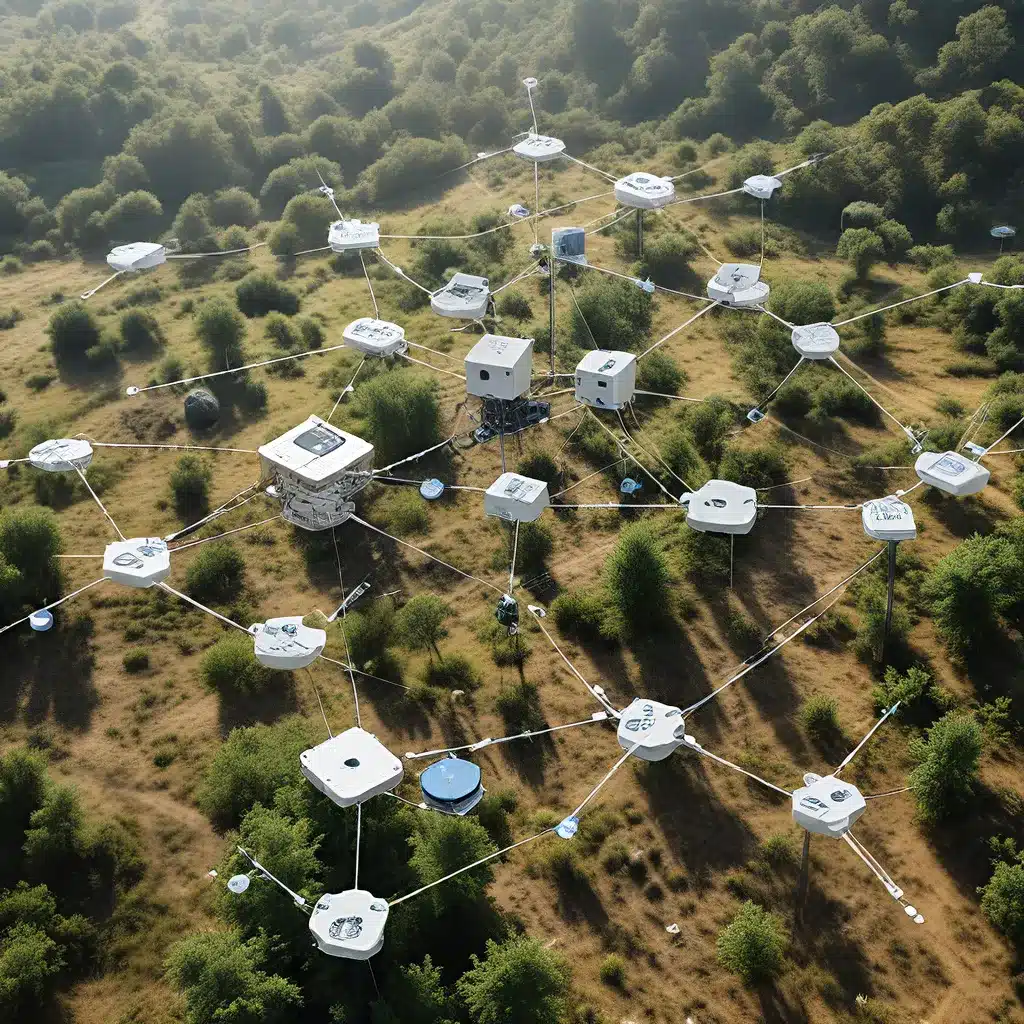
The Evolving Landscape of Sensor Networks and IoT
The world of sensor networks and Internet of Things (IoT) has undergone a remarkable transformation in recent years, driven by advancements in technology and the growing demand for intelligent, interconnected systems. As the ubiquity of sensors and the proliferation of IoT devices continue to reshape various industries, the need for robust and resilient sensor network designs has become increasingly critical.
In this article, we will explore the nuances of distributed sensor algorithms, their role in enhancing environmental monitoring and control systems, and the pivotal considerations surrounding security and energy management in the context of IoT deployments.
Distributed Sensor Algorithms: The Foundation of Resilient IoT
At the heart of modern sensor networks lie distributed sensor algorithms, which enable the seamless coordination and collaboration of multiple sensing devices. These algorithms are designed to facilitate the efficient collection, processing, and dissemination of data from dispersed sensor nodes, creating a decentralized and resilient system.
One of the key advantages of distributed sensor algorithms is their ability to adapt to dynamic environmental conditions and respond to changes in a timely and coordinated manner. By leveraging local decision-making and peer-to-peer communication, these algorithms can mitigate the impact of individual node failures, ensuring that the overall system remains robust and functional even in the face of disruptions.
Byers and Wetterwald’s research on the role of fog computing in IoT systems highlights the importance of distributing data and intelligence across the network to enhance resiliency and scalability. This approach empowers sensor nodes to process and analyze data locally, reducing the reliance on centralized control and minimizing the risk of single points of failure.
Environmental Monitoring and Control: The Promises of Sensor Networks
The integration of sensor networks and IoT technologies has transformed the landscape of environmental monitoring and control systems. By deploying a diverse array of sensors, ranging from temperature and humidity to air quality and water levels, organizations can now gather real-time data and gain valuable insights into the state of their physical environments.
The Ubiquity article on the “Internet of Things” underscores the potential of IoT to revolutionize environmental management, enabling proactive decision-making and automated control systems. By integrating sensor data with advanced analytics and control algorithms, organizations can optimize resource utilization, reduce operational costs, and enhance sustainability in their operations.
Moreover, the deployment of distributed sensor algorithms in environmental monitoring and control systems can enhance resilience and minimize the impact of localized disruptions. In the event of a sensor node failure or a network disruption, the decentralized nature of the system allows for seamless failover and continued operation, ensuring uninterrupted data collection and control processes.
Security Considerations in IoT Sensor Networks
As the reliance on sensor networks and IoT technologies continues to grow, the importance of security has become paramount. Distributed sensor algorithms play a crucial role in mitigating security risks and safeguarding the integrity** of IoT systems.
The Ubiquity article on “Fog Computing” highlights the challenges faced in securing IoT environments, including device vulnerabilities, network-level attacks, and data privacy concerns. By leveraging distributed algorithms, sensor networks can implement robust security measures, such as decentralized authentication, secure communication protocols, and anomaly detection mechanisms, to protect against malicious activities.
Distributed sensor algorithms also enable localized decision-making and data processing, reducing the attack surface and minimizing the impact of security breaches. In the event of a targeted attack on a specific node or a network segment, the resilience of the overall system can be maintained through the adaptive and self-healing capabilities of the distributed algorithms.
Energy Management and Sustainability in IoT Sensor Networks
The energy consumption and sustainability of IoT sensor networks are crucial factors that must be addressed in the design and deployment of these systems. Distributed sensor algorithms play a pivotal role in optimizing energy usage and enhancing the long-term viability of sensor networks.
Energy-efficient algorithms and duty-cycling mechanisms employed in distributed sensor networks can extend the operational lifetimes of individual nodes and the overall system. By dynamically adapting the sampling rates, data processing, and communication protocols based on environmental conditions and resource availability, these algorithms can minimize power consumption and prolong battery life.
Moreover, the decentralized nature of distributed sensor algorithms can facilitate the integration of renewable energy sources and energy harvesting techniques. Sensor nodes can autonomously manage their energy consumption and coordinate with neighboring nodes to balance the energy load, optimize resource utilization, and enhance the sustainability of the IoT ecosystem.
Conclusion: The Future of Resilient Sensor Networks and IoT
The advancements in distributed sensor algorithms have paved the way for resilient, adaptive, and sustainable sensor networks in the IoT landscape. By leveraging the strengths of decentralized decision-making and peer-to-peer communication, these algorithms have the potential to transform how we monitor, control, and manage our physical environments.
As the sensor network and IoT industries continue to evolve, the integration of distributed algorithms, security measures, and energy-efficient designs will be crucial in unlocking the full potential of these technologies. Sensor-networks.org is committed to exploring and promoting the latest developments in this dynamic field, empowering organizations and individuals to harness the transformative power of sensor networks and IoT for a more resilient and sustainable future.